General Overview:
There are 30 non-native ambrosia beetle species in North America but only a half dozen are serious insect pests within nurseries, pecans & apples. The Xylosandrus species of beetle borers are native to southeast Asia & were first reported in the United States during the early 1930s (black stem borer). Today they are found in 29 states. Two ambrosia species found in NJ nurseries cause serious damage to trees. (1) The black stem borer (Xylosandrus germanus) (~2 mm) has attacked more than 200 tree species (fig.1). (2) The granulate (Asian) borer (Xylosandrus crassiusculus) (~2.5 mm) has attacked more than 120 tree species (fig.2). Both species are a threat to trees that are stressed. A 3rd species, the invasive redbay ambrosia beetle (Xyleborus glabratus), was first found in Louisiana in 2014. A major difference is it will also attack trees not under stress. It is not presently found in NJ, but it is moving north. The concern is the impact it may have on sassafras forests.
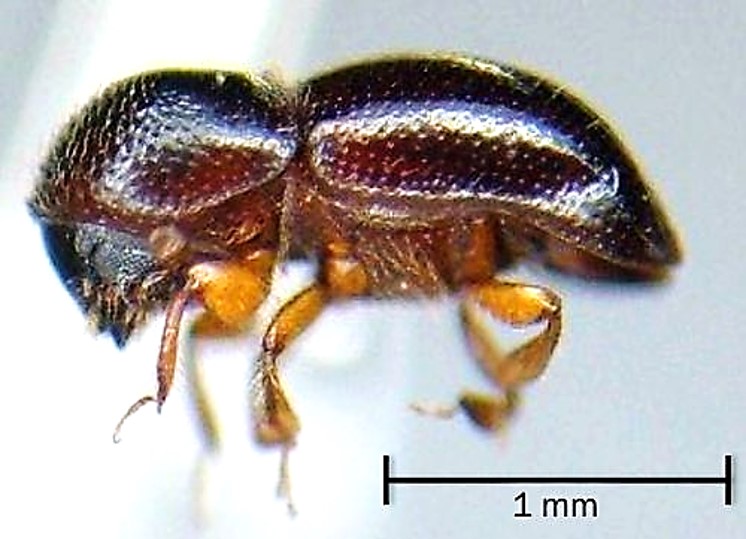
Fig. 1: An adult female ambrosia black stem beetle borer. Photo Credit: Brad Barnd, Bug Guide.net
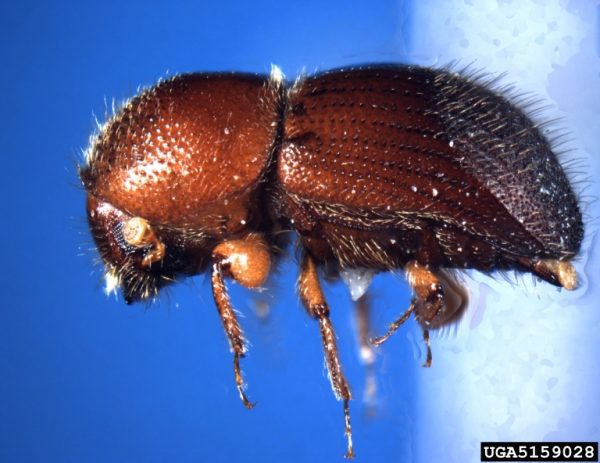
Fig 2: An adult female ambrosia granulate borer. Photo Credit: Alabama Coop. Ext.
Ambrosia Beetle Symptoms & Signs:
The stem entrance hole & exit holes from the ambrosia beetles are the same. The black stem borer holes are ~1mm in diameter (1/25th of an inch) with the granulate borer holes being slightly larger (fig.3). Sawdust & frass pushed out & projecting from the borer holes resemble “toothpicks” (fig.4). These temporary projections are distinctive & diagnostic for the presence of ambrosia beetles. Once the sawdust packings are observed, it is too late to apply protective insecticides (e.g., pyrethroids). Other symptoms that can become apparent are sap production, bark cracking, & wood staining (from fungus production)(fig.5). Opportunistic pathogens (e.g., Fusarium spp.) can infect the tree’s defensive sap secretions & move into the vascular tissue (fig.6).
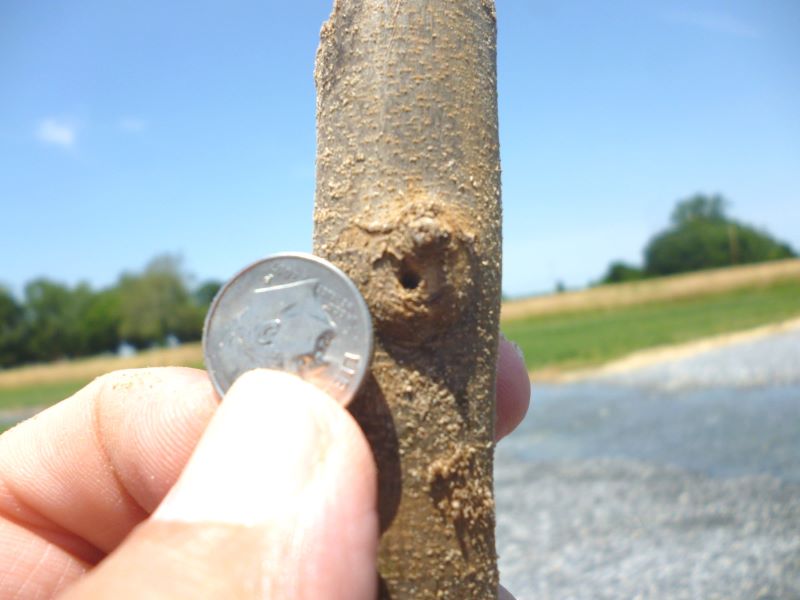
Fig. 3. Ambrosia granulate borer entrance/exit hole (~1.5 mm). Photo Credit: Steven K. Rettke, Rutgers Coop. Ext.
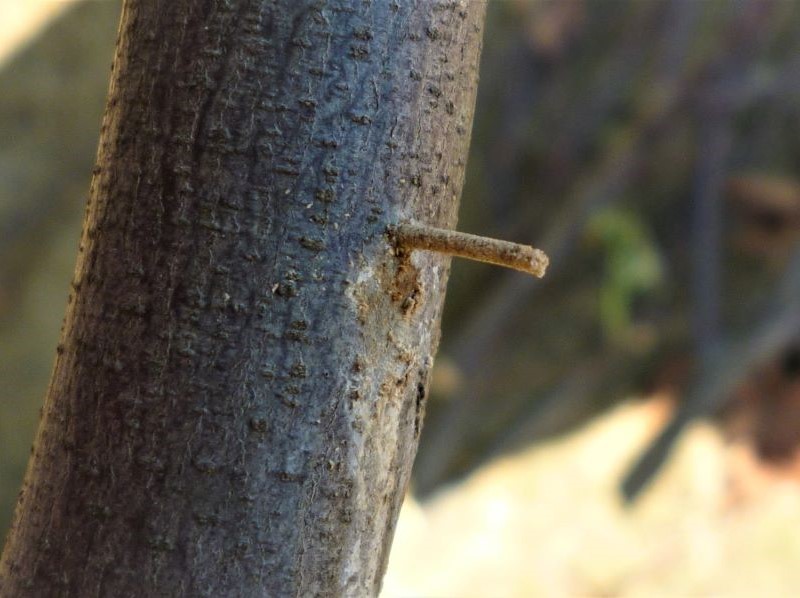
Fig. 4. Ambrosia borer packed frass “tooth-pick” projection. They are diagnostic for ambrosia borers. Photo: Steven Rettke
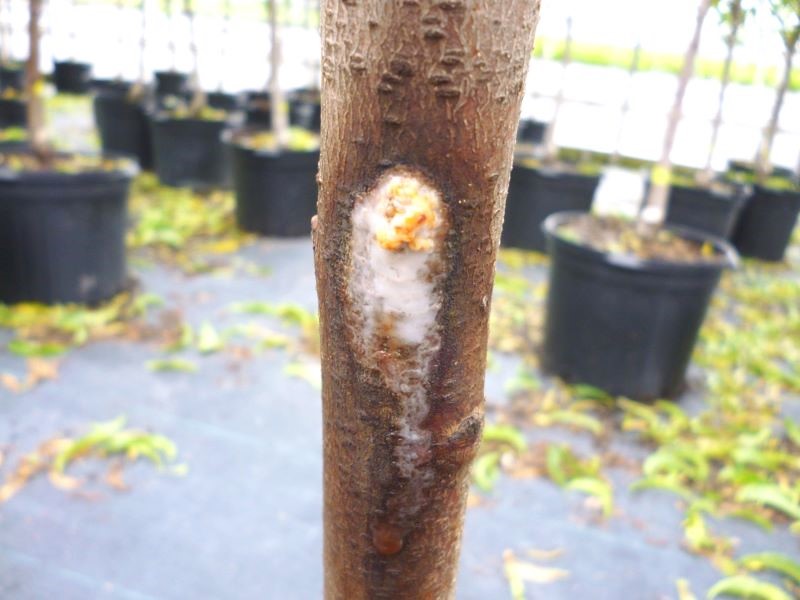
Fig. 6. Opportunistic pathogens (e.g., Fusarium spp.) can infect defensive sap secretions & move into tree’s vascular tissues. Photo Credit: Steven K. Rettke, Rutgers Coop. Ext.

Fig. 5. Ambrosia borer symptoms on tree stem. Infestations cause sap production, bark cracking & wood staining. Photo Credit: Steven K. Rettke, Rutgers Coop. Ext.
Branch wilting & dieback are caused by extensive borer galleries produced by adult beetles (fig.7 & 8). The tunneling of galleries is often deep into the sapwood & heartwood. Beetles propagate & cultivate “fungal gardens” within the galleries. The Xylosandrus genera carry symbiotic fungus spores in pouch-like structures on the upper back of the thorax. The introduced Ambrosial spp. is a fungal symbiont associated with both beetles but is not a plant pathogen. The beetle borers do not feed on the trees as they create the galleries but instead feed on the introduced fungus for nutrients. Adult females will not lay eggs until the fungal symbiont begins to grow within the galleries (fig.9).
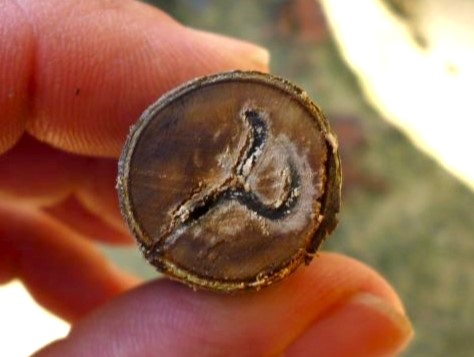
Tunnel galleries made by Ambrosia beetle borer adult female. Eggs are not laid until after ambrosia fungus begins to grow within gallery. (Photo Credit: Steven K. Rettke, Rutgers Coop. Ext.)
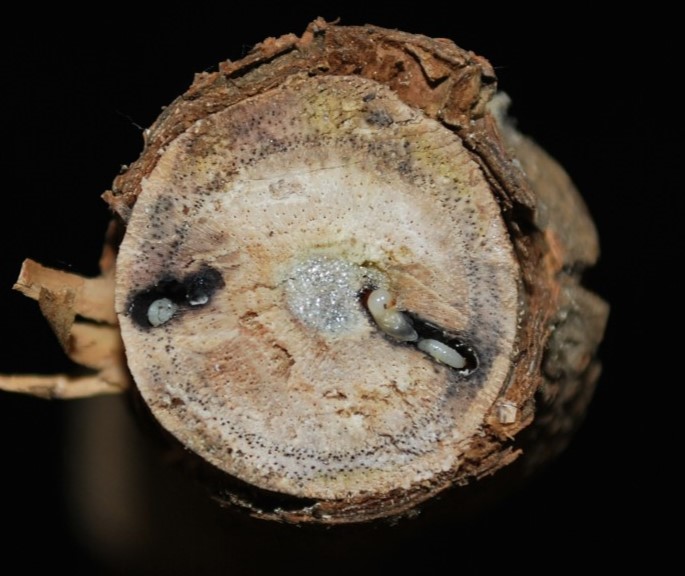
Fig. 8. Cross cut through infested tree stem shows developing ambrosia borer larvae within galleries. Photo Credit: Sabrina Tirpak, Rutgers Plant Diagnostic Lab.
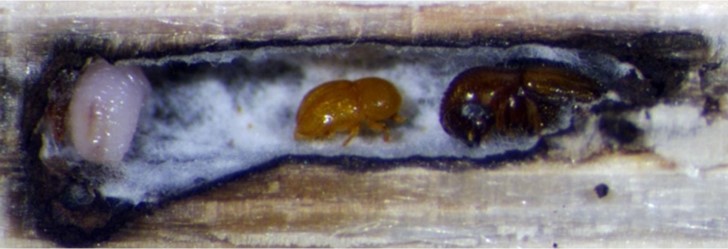
Fig. 9. Longitudinal cut through infested stem showing ambrosia black stem borer life stages. Larva (L), adult male (C), & adult female (R) are shown feeding on introduced Ambrosial spp. fungal symbiont. The white colored fungus is clearly evident growing within the gallery. Photo Credit: Dr. Chris Ranger, USDA-ARS.
Ambrosia (Xylosandrus) Phenology:
Research by the USDA in collaboration with Ohio State University produced information regarding ambrosia beetle emergence periods. Both beetle species have two generations per year & adults overwinter in the tree galleries. Most tree attacks by the 1st generation borers can extend from April into June but the peak adult emergence, flights & egg-laying occur during the first two weeks of May. The 2nd generation occurs during July but is usually less damaging (fig.10). With the 1st generation, the flight activity dramatically increases with 2-3 consecutive days above 70̊ F. The redbud flower bloom is a useful PPI (plant phenological indicator). After emergence & during adult flight, females do not need to mate (parthenogenic) as they look for & detect stressed trees to attack & lay eggs. The stressed host trees selected are generally deciduous, thin-barked species. It takes 25 days after egg hatch before adults develop.
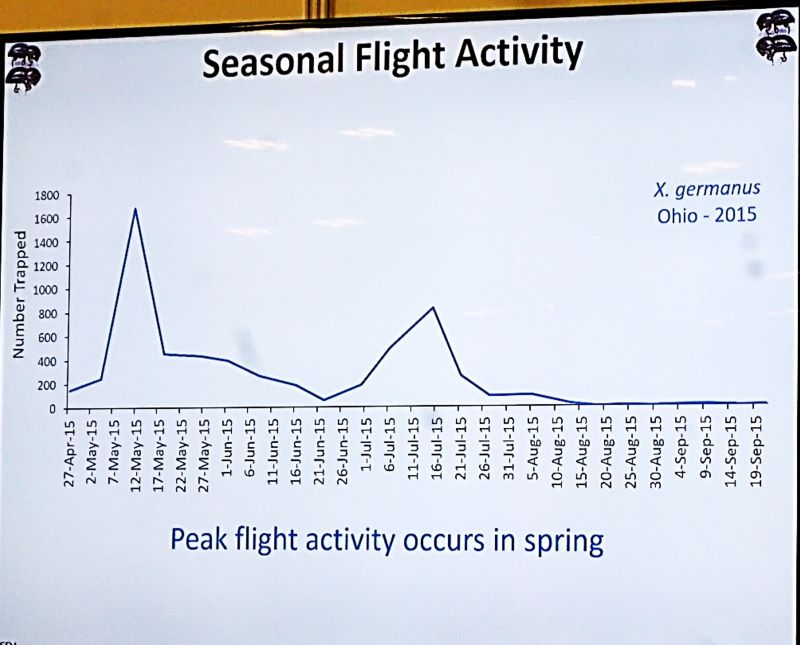
Fig. 10. Graph representing peak adult ambrosia black stem borer spp. emergence. Both generations & their seasonal flight activity are shown from late April to mid-August. Graph Credit: USDA & OSU research.
Stressed Tree Species Commonly Attacked:
Ambrosia beetles have an affinity for trees emitting ethanol aerosols. Tree roots under anaerobic (low oxygen) conditions can release large amounts of ethanol. Therefore, trees less tolerant to flooding stress will be most susceptible to beetle attack (fig.11). With flood-stressed trees, 90% of infestations occur within lower trunk stems. Also, other physiological stressors such as cold temperature/frost injuries will attract the beetles (fig.12).
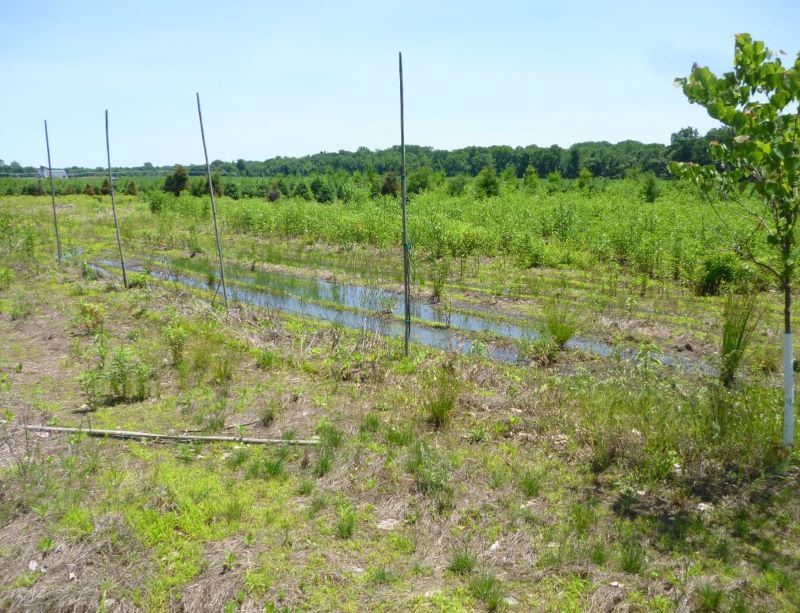
Fig. 11. The young trees that were growing in this flooded nursery area were infested & killed by ambrosia borers. Photo Credit: Steven K. Rettke, Rutgers Coop. Ext.
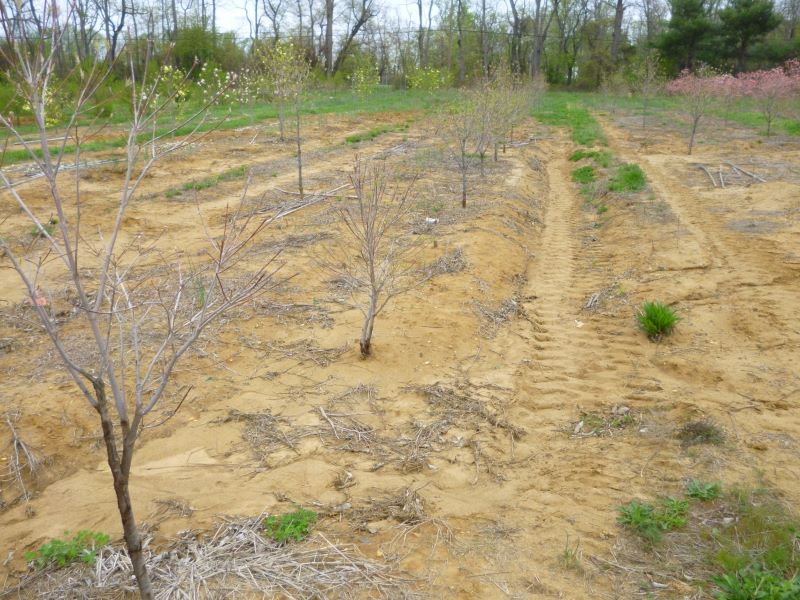
Fig. 12. Ambrosia borers infested some dogwoods in this nursery that were stressed by cold temperature injuries in the early spring months. Photo Credit: Steven K. Rettke, Rutgers Coop. Ext.
Tree Stressors Inducing Ambrosia Attacks:
The following stressors listed can induce large releases of ethanol from affected trees: 1–Flooding; 2-Poor drainage; 3-Early spring season freeze/frost; 4-Delayed spring dormancy-break; 5-Planting too deep; 6-Heat stress; 7-Defoliation; 8-Transplant shock; 9-Disease; 10-Trunk injury. The 1st five stressors in bold are most important with inducing ethanol release with flooding having the greatest impact.
Ambrosia Beetle Preferred Tree Hosts:
Ambrosia beetles are traditionally considered to be secondary pests of stressed trees. Some of the most commonly infested trees within commercial nurseries include dogwood (Cornus), honey locust (Gleditsia), magnolia (Magnolia), maple (Acer); redbud (Cersis), and Japanese snowbell (Styrax) (fig.13). Some reports of attacks on apparently healthy trees have occurred by redbay ambrosia beetle species. They are migrating north from areas to our south. Their greatest threats are to sassafras trees within forests.

Fig. 13. These young dogwood (Cornus) trees in a nursery were infested with ambrosia borers & required removal. Photo Credit: Courtesy of Kristen Myers at Hidden Lake Nursery.
Ambrosia Beetle Infested Tree Impacts:
High levels of beetle borer attacks will often kill most young trees with caliper diameters of less than 3 inches. With lighter infestations trees have a chance to recover. Ambrosia beetles (1st generation) will begin to attack trees in April before bud break. Symptoms will initially progress with leaf wilting & flagging. Then branch dieback, basal sprouts, & finally, tree death will occur. Beetle borers can continue to attack & infest living or even dead trees (fig.14).
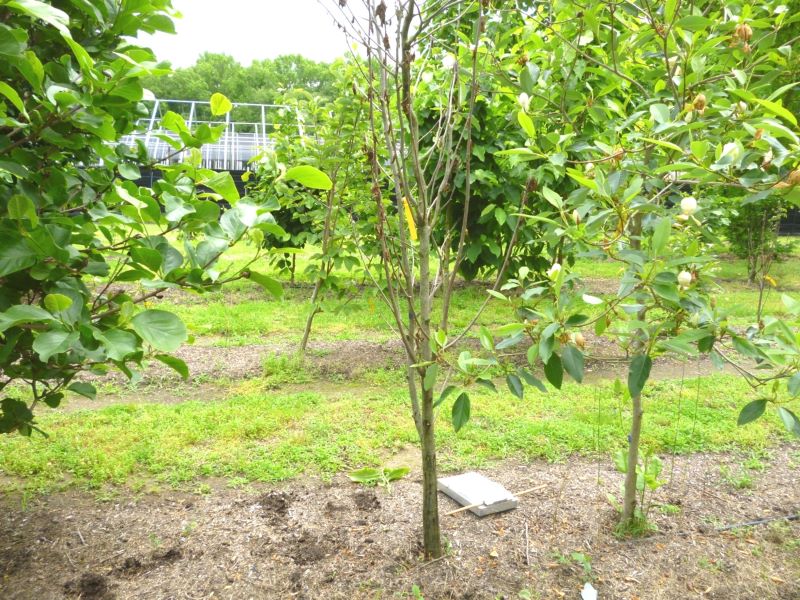
Fig. 14. Young magnolia tree showing symptoms from ambrosia borer infestation. High level infestations of ambrosia borers are often fatal to young trees with stem calipers of 3 inches or less. Photo Credit: Steven K. Rettke, Rutgers Coop. Ext.
Preventative Chemical Controls:
The pyrethroids (e.g., permethrin & bifenthrin) used as bark sprays on lower stems can be effective preventatives. Treatments should be applied before peak beetle flight & be in place before egg-laying adults attempt to bore into tree stems. Even with preventative chemical spray treatments, successful ambrosia beetle borer attacks can still occur, especially with less flood tolerant trees (e.g., Styrax). Systemic insecticides (e.g., neonicotinoids) are not effective. The reason is that the beetle borers do not feed on the tree tissues as they create the galleries but instead feed on the introduced fungus for nutrients.
Value of Using Ambrosia Beetle Traps:
Ambrosia adult beetle traps are used to both direct scouting activity & the timing of spray treatments. Beetles overwinter as adults within stem borer galleries. Beetles remain inactive until conditions are favorable but can suddenly emerge in large numbers. Emergence can vary between years or locations but generally adult borers attack before leaf bud break (fig.15).
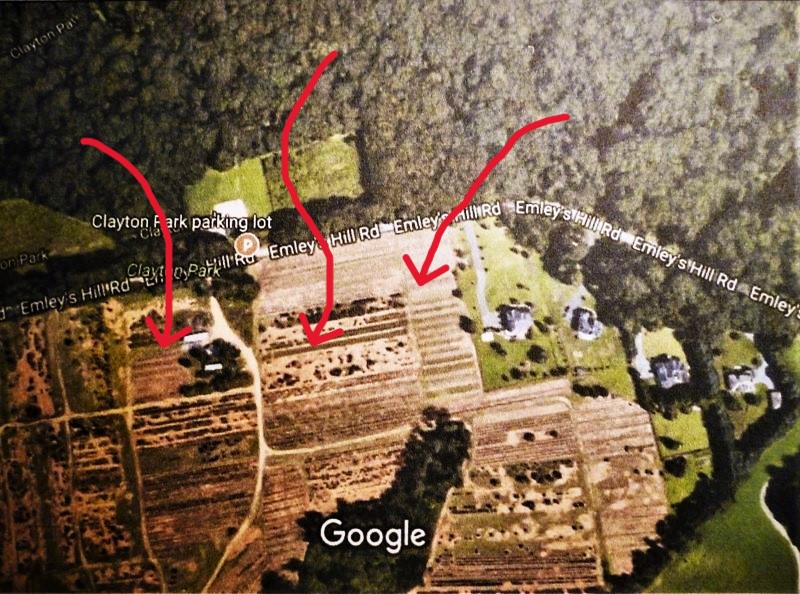
Fig. 15. Ambrosia borer migration of adult females into nursery from adjacent wood lots. Largest populations occur with 1st generation during the spring months. Image from Google Maps.
Trapping Ambrosia Adults:
Traps will catch adults of ambrosia beetle species that are problematic in nurseries (black stem borer & granulate ambrosia beetles). Within nurseries, place traps near wood lots & close to the ground (2-3 ft.). Ethanol lures should contain 10-15% ethyl or denatured alcohol (not rubbing alcohol). Purchased Lindgren traps are expensive, but purchased lures have advantages (i.e., more durable & dependable)(fig. 16 & 17). Purchased lures with inexpensively made traps using small plastic bottle containers with a wick can also be effective (fig. 18 & 19).
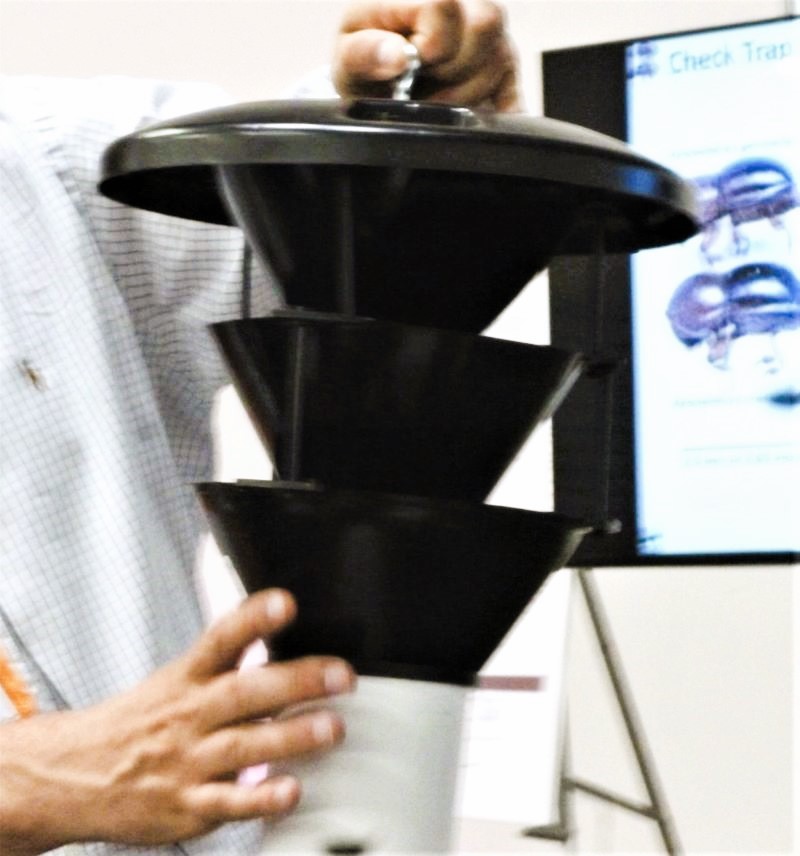
Fig. 16. A purchased Lindgren funnel trap is expensive. When used they should be placed 2-3 ft. above ground level & close to the edge of wood lots. Photo Credit: Steven K. Rettke, Rutgers Coop. Ext.
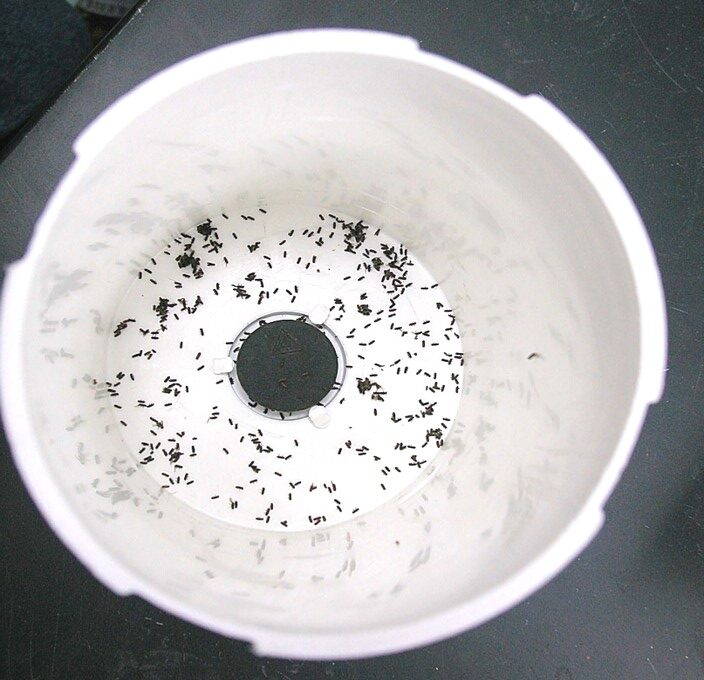
Fig. 17. Over one hundred ambrosia black stem borers at the bottom of Lindgren trap collection cup. The diameter of the bottom of the cup is ~3 inches. Photo Credit: Steven K. Rettke, Rutgers Coop. Ext.
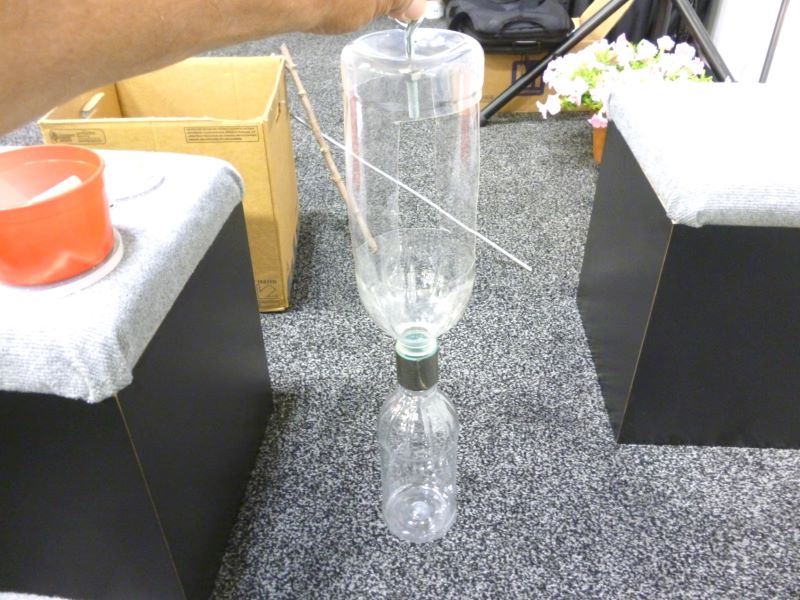
Fig. 18. Inexpensively made ambrosia beetle borer bottle trap. The upper inverted bottle has cut openings on two sides. The attached smaller upright bottle contains a 10-15% ethyl or denatured alcohol solution with a wick. Photo Credit: Steven K. Rettke, Rutgers Coop. Ext.
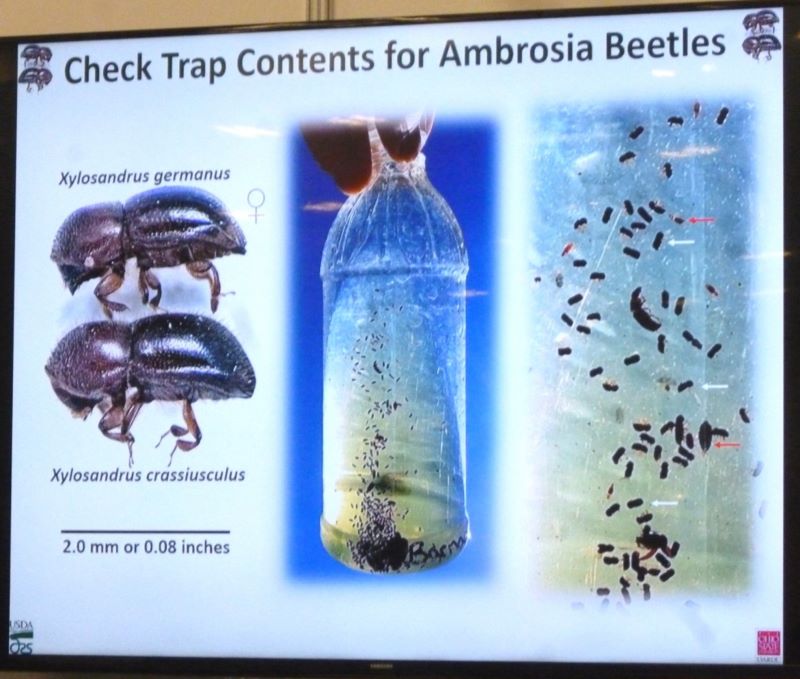
Fig. 19. Adult ambrosia beetle bottle trap captures. Adult borers are suspended within a ethanol solution. Image Credit: USDA & OSU research.
Also, using cut stems (bolts) ~18 inches in length & 1-2 inches in diameter soaked in 95% ethanol (ethyl alcohol) for 24 hours can attract emerging adults. The vertically hanging bolts should be about 2 feet off the ground. These cut stems should routinely be inspected for tunnel entrances & the sawdust/frass “toothpick” projections (fig.20 & 21). Trap collections & tree attacks usually closely coincide & provide the best treatment timing for protective pyrethroid sprays (permethrin or bifenthrin) on trunks & lower stems.
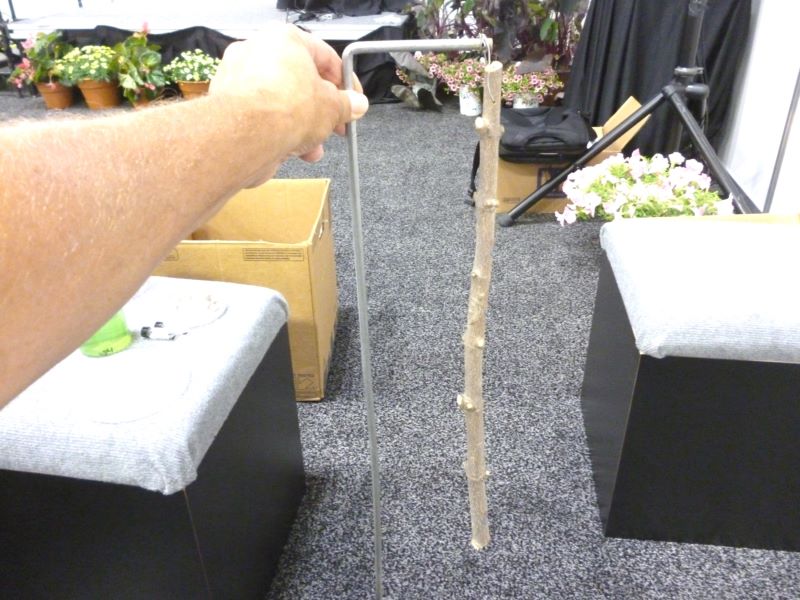
Fig. 21. Ambrosia borer bolt stem trap after being soaked in alcohol is attached to a angled metal support & inserted into ground. Traps are placed adjacent to edge of wood lots & suspended 2-3 ft. above ground. Photo Credit: Steven K. Rettke, Rutgers Coop. Ext.
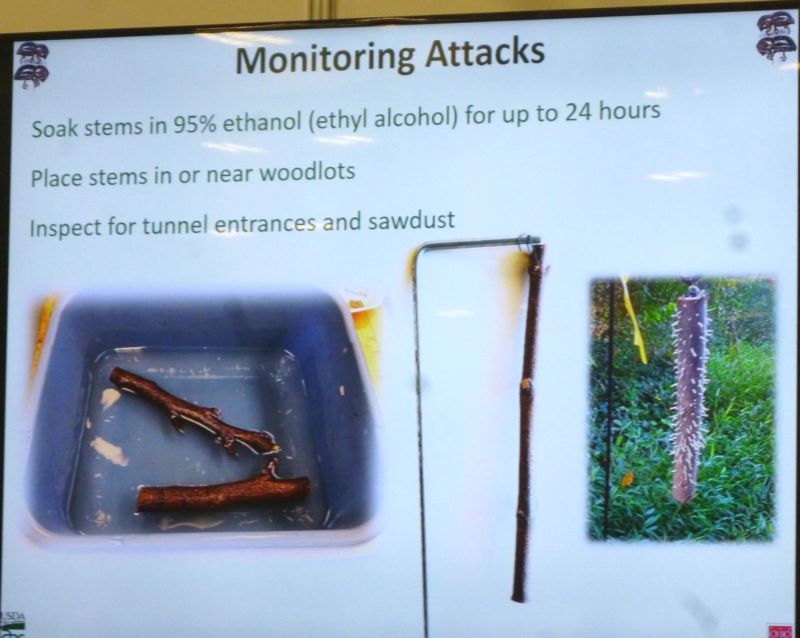
Fig. 20. Ambrosia borer stem bolt traps are soaked in 95% ethanol (ethyl alcohol) for 24 hours. Cut stem bolts should be 12-18 inches in length & 1-2 inches in diameter. Image Credit: USDA & OSU research.
Ambrosia Trap Review & Conclusions:
Ethanol-baited traps catch a variety of ambrosia beetle species. The two primary ambrosia beetle species of concern in NJ nurseries can have different activity periods (black stem borer & granulate borer). Even within species, the peak captures can vary from year to year. When spring temperatures reach 70° F. for 2-3 consecutive days, then female adults can appear suddenly in large numbers. Lures and trap trees can also be used to time insecticide treatments. Trap trees can also attract beetle attacks away from certain areas to protect trees at particular sites. Be certain to avoid growing flood sensitive tree species in nursery fields that are prone to flooding.
Reference: Adaptation from a presentation by Christopher Ranger, Ph.D., USDA Research Service, @ Cultivate ’22 Conference, Columbus, Ohio, July 19, 2022.

